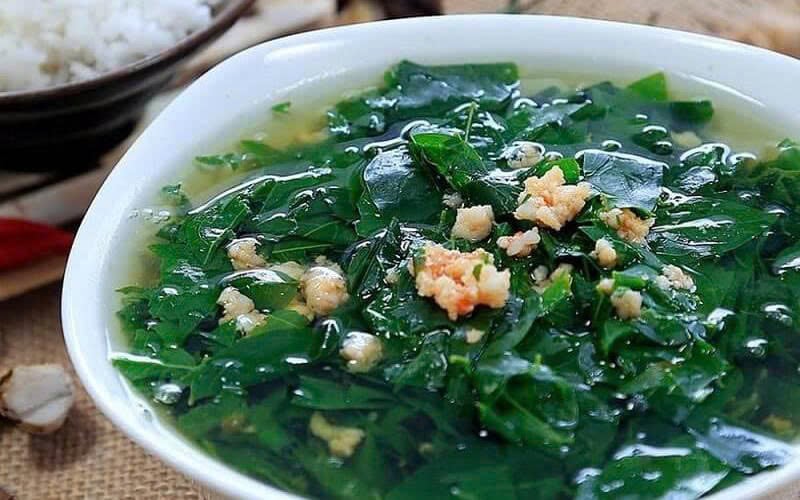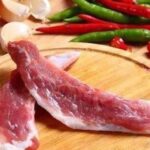Unleashing the Power of a Humble Green: Unveiling the Surprising Health Benefits of Rau Ngót
While many families splurge on expensive meats like beef and salmon in pursuit of iron-rich foods, a humble vegetable, widely available in local markets, boasts an impressive iron content at a fraction of the cost. Enter rau ngót, a familiar yet often overlooked green with a nutritional punch.
A Nutritional Powerhouse in Disguise
According to nutritional experts, rau ngót packs a surprising amount of nutrients. Per 100g, it contains a substantial 15.7mg of iron, which is seven times more than beef (approximately 2.6mg/100g) and a whopping 17 times more than salmon. But that’s not all; rau ngót also offers:
- 85mg of vitamin C, surpassing the content found in fresh oranges.
- 23,000 UI of beta-carotene, a precursor to vitamin A, essential for healthy vision.
- 6.5g of plant-based protein, along with crucial minerals such as potassium, magnesium, copper, and manganese.
- An array of essential amino acids that bolster the immune system.
With such an impressive nutritional profile, rau ngót is not just ideal for those battling anemia but also highly beneficial for children, postpartum women, the elderly, and vegetarians.

A Traditional Medicine Staple in Your Kitchen
Beyond its nutritional prowess, rau ngót is revered in traditional East Asian medicine for its therapeutic properties. Characterized by its cooling nature and subtle sweetness, rau ngót boasts a range of benefits, including heat dissipation, diuretic effects, detoxification, hemostasis, antibacterial action, and anti-inflammatory support. Since ancient times, fresh rau ngót juice has been used by mothers to:
- Enhance lactation and aid in postpartum recovery.
- Treat oral thrush in infants by crushing the leaves into a paste.
- Reduce fever and promote healthy digestion with its mild laxative effect.
However, pregnant women, especially those with a history of miscarriage, preterm labor, or in the early stages of pregnancy, should refrain from consuming excessive amounts of raw rau ngót or using it in high doses. This is due to the presence of papaverine, a compound that may induce uterine contractions.

Affordable, Accessible, and Easy to Grow at Home
Currently, rau ngót is in season, resulting in an abundant supply in local markets, with prices ranging from a mere 3,000 to 7,000 VND per bunch. While the price is incredibly affordable, some vendors refrain from stocking large quantities as rau ngót tends to wilt quickly, limiting its shelf life to a single day.
During colder months or when supply dwindles, prices can surge to 20,000–25,000 VND per bunch, and even then, it may not be readily available. Consequently, many urban families have taken to growing rau ngót at home to ensure a consistent supply of this nutritious green.
A Simple Guide to Growing Rau Ngót at Home

If you have a small balcony, rooftop, or a tiny backyard, growing rau ngót is entirely feasible. Here’s a simple step-by-step guide:
- Prepare a pot with well-drained, airy soil. Place the pot in a location with moderate sunlight, avoiding direct, intense sunlight.
- Propagate rau ngót: Utilize a purchased bunch of rau ngót, selecting a semi-mature stem (neither too old nor too young). Cut a 15-20cm length and firmly insert about 10cm into the pre-watered soil.
- Care: Water twice daily, in the early morning and cool evening. Within 1–2 weeks, the cutting will take root and produce new leaves.
- Harvest: After 2–3 months of healthy growth, you can harvest the first batch. For subsequent harvests, cut close to the root to encourage the growth of new, vibrant branches.
The Super Nutritious Part of the Pig: A Hidden Treasure
Introducing the ultimate superfood, a unique delicacy derived from pork. This special part of the pig is believed to possess potent properties, especially when paired with beer. Together, they create a dynamic duo, a “tonic” of sorts, that is highly revered by gentlemen for its perceived invigorating qualities.
What Are the Health Benefits of Perilla Leaves? Who Should Avoid Consuming Them?
Perilla frutescens, commonly known as perilla or tia to, is a versatile herb with a plethora of uses beyond its flavorful profile. With a rich history in traditional medicine, perilla is more than a culinary herb; it is a powerhouse of nutrients that boosts overall health, strengthens the immune system, and aids in the treatment of various ailments.



































